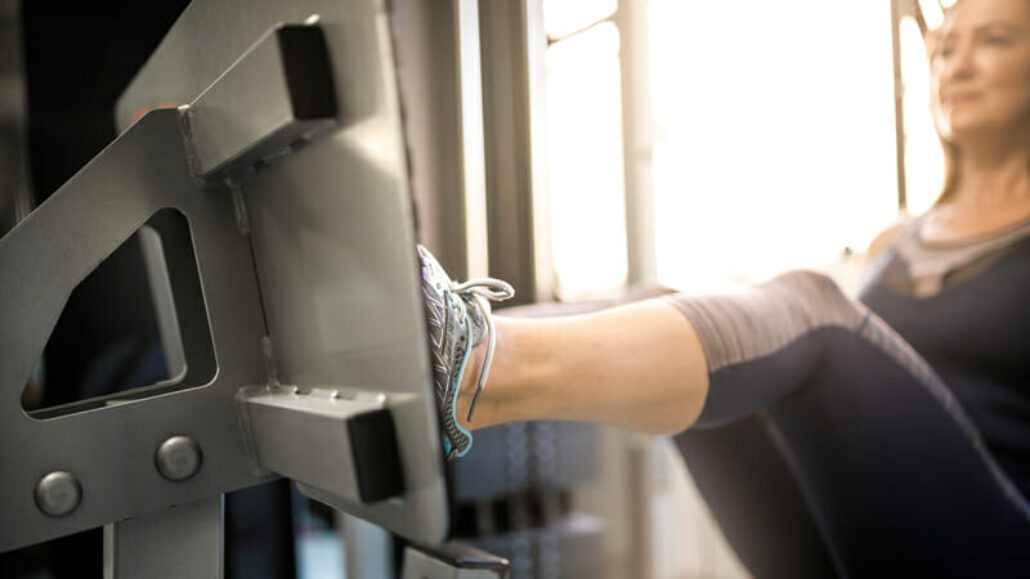Learn about whether you need medical evaluation if your legs give out.
It is alarming to suddenly have your legs give out as you take a step. However, you might be surprised to learn that many adults experience sudden leg weakness, and it is not always a serious condition. Of course, that doesn’t make it any less alarming when it happens to you. Pain interventionalist Dr. Catherine Choi talks about the frequency of leg weakness. And she reviews some of the medical conditions that can cause your legs to suddenly give out.
How frequently do adults experience leg weakness?
“Having legs give out is relatively common among adults,” explains Dr. Choi. “One research study reported that almost 12 percent of adults age 36 to 94 experienced at least one knee-buckling episode in a three-month period. The study notes that people experience temporary leg weakness regardless of fitness level.”
Dr. Choi explains that legs can give out for a number of different reasons. In some cases, the cause is temporary and not worrisome. But in other cases, a collapsing leg is a symptom of a serious underlying medical issue.
Minor conditions that can make your legs give out
“A wide range of conditions can cause temporary leg weakness,” says Dr. Choi. “If you have any concerns, of course we are happy to see you at Summit for an evaluation. But I think it’s also helpful to understand the circumstances that might make your legs give out. Let’s start with some of the benign reasons that legs give out as well as conditions that increase the risk of joint instability.”
- A leg spasm. Any muscle can spasm temporarily and without warning. You may experience this kind of muscle issue while exercising or when you get up suddenly after being stationary for a long period of time. When leg muscles spasm, it can be embarrassing. But it’s not a cause for concern so long as the numbness doesn’t persist.
- Arthritis damage affecting the tissues and structures of the knee joint can cause joint instability and joint collapse. “If arthritis is affecting joint function, we can evaluate your joint and offer treatments to help with pain and possibly slow joint deterioration.
- Multiple sclerosis. This autoimmune condition attacks the central nervous system, causing muscle weakness and tightness. It can also cause balance issues. All of these symptoms increase the risk of knee or leg weakness.
Traumatic injuries that can make your legs give out
“Legs can collapse as the result of a traumatic injury,” notes Dr. Choi. “Injuries can trigger immediate leg disfunction. But in other cases, untreated damage may increase over time before affecting leg stability.”
- A torn meniscus. Sudden knee trauma or repetitive wear and tear on knee cartilage may damage the meniscus, leading to interference with knee function.
- Trapped bone or cartilage fragments. When the knee experiences trauma, broken or torn bits of bone or cartilage may become trapped between the bones in the joint.
- Torn ligaments. A blow to the knee or a sudden twisting motion can cause ligaments to tear, resulting in knee collapse.
- Kneecap dislocation. This painful injury occurs when your patella pops fully or partially out of the femur groove. Depending on the severity of the dislocation, the kneecap may feel unstable with sensations of shifting in the joint.
Spine-related conditions that cause legs to give out
“The nerves that run along the spinal column connect our extremities to our brain,” says Dr. Choi. “Because the nerves in the spine carry messages to our extremities, we sometimes find that leg dysfunction is related to spine damage affecting these nerves.”
- A pinched nerve. A pinched nerve in the spine may prevent brain signals from reaching our legs. The symptoms of a pinched nerve can include pain, numbness, tingling or prickling sensations, and muscle weakness in our legs or in other parts of our body.
- Femoral neuropathy. The femoral nerve is one of the largest nerves in the body and controls muscles that straighten the leg. Femoral neuropathy, or femoral nerve dysfunction, is a condition characterized by inability to feel or move your leg because the femoral nerve is damaged. Causes of nerve damage include direct injury, tumor growth on the spine, prolonged pressure on the spine, and diabetes.
- A spinal cord injury. Spinal cord injuries are among the most common reasons that legs give out. These injuries vary in severity but should always be evaluated immediately by a spine specialist. This is important because when traumatic damage to the spine causes nerve damage, there is a risk of paralysis.
Treatment for this condition
Medical treatment for buckling legs will depend on the cause and seriousness of the condition. Treatment options range from rest, ice, compression, and elevation for minor injuries to brace and bandage support, physical therapy, or surgery for severe or chronic leg problems.
“If your legs give out, but you recover quickly, you may not need to go straight to the doctor,” says Dr. Choi. “However, whenever leg dysfunction includes severe pain that does not improve and continues for a few days, difficulty using stairs, ongoing inability to perform daily activities, or redness and fever, it’s time to make an appointment with your spine specialist.”
Summit Orthopedics offers comprehensive spine expertise
Our back specialists diagnose spine problems and design custom treatment plans built on a conservative, nonsurgical approach. Most patients find relief through treatments including guided injections, specialized physical therapy, biofeedback, exercise, activity modification, and medication. When conservative care does not relieve symptoms, our highly skilled surgeons offer proven, evidence-based surgical options. Together with you, we will determine the right course of action.
Start your journey to a healthy spine. Find your spine expert, request an appointment online, or call us at (651) 968–5201 to schedule a spine consultation.
Summit has convenient locations across the Minneapolis-St. Paul metro area, serving Minnesota and western Wisconsin. We have state-of-the-art centers for comprehensive orthopedic care in Eagan, MN, Plymouth, MN, Vadnais Heights, MN, and Woodbury, MN, as well as additional community clinics throughout the metro and southern Minnesota.
More resources for you
- Meet Dr. Choi
- Read about how to evaluate a bruised spine

